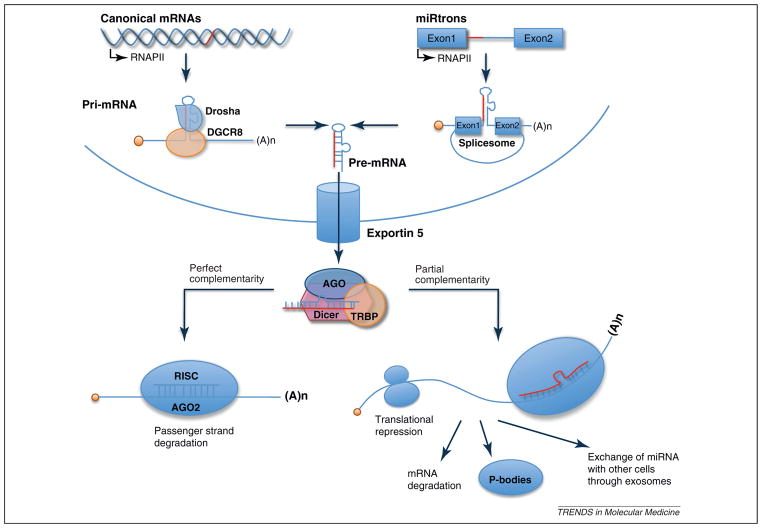Figure 1.
microRNA (miRNA) biogenesis. miRNAs are processed from primary miRNAs (pri-miRNAs), which are transcribed by RNA polymerase II from independent miRNA genes or from portions of introns of protein coding genes (miRtrons) in the nucleus. The maturation of pri-miRNAs is mediated by two RNase III-like endonucleases, namely Drosha and Dicer. Drosha functions with DGCR8, containing a double-stranded RNA (dsRNA)-binding domain, to process pri-miRNAs to ~70 nt pre-miRNAs. Some pre-miRNAs are produced from very short introns (miRtrons) as a result of splicing and debranching, bypassing the Drosha–DGCR8 step. Pre-miRNAs are exported to the cytoplasm via exportin 5 and cleaved by Dicer within complexes with transactivation responsive RNA binding protein (TRBP), producing a ~20 bp miRNA duplex. One strand of the miRNA duplex that has partial complementarity with sequences in the 3′-untranslated region (3′UTR) of target mRNA is preferentially incorporated into a miRNA-induced silencing complex (miRISC), whereas the passenger strand is released and degraded. The activity of miRISC leads to translational repression or mRNA degradation. Repressed mRNA could be moved to P bodies for either degradation or storage. Alternatively, miRNA could be transferred to other cells through exosome-dependent mechanisms [73].

